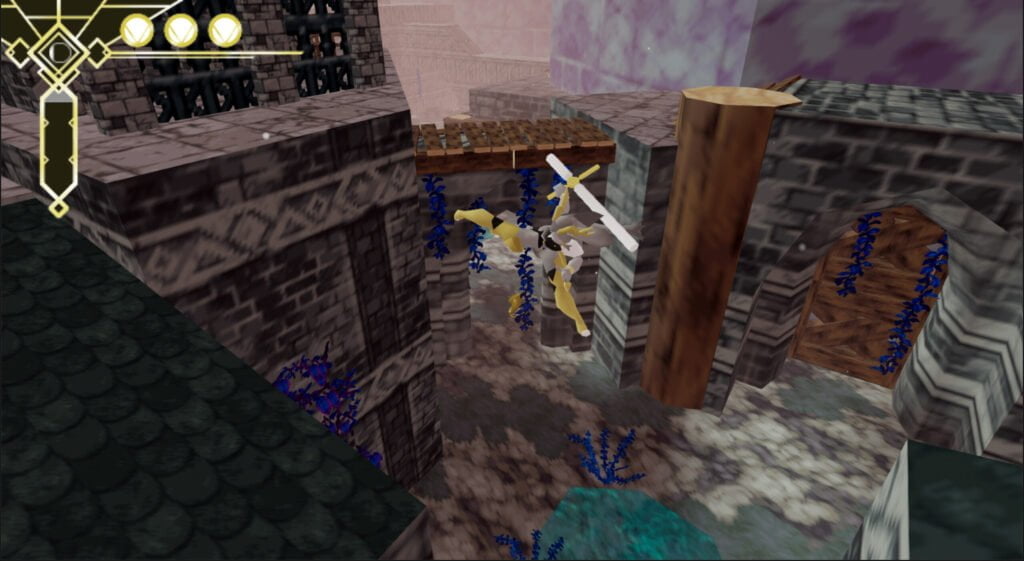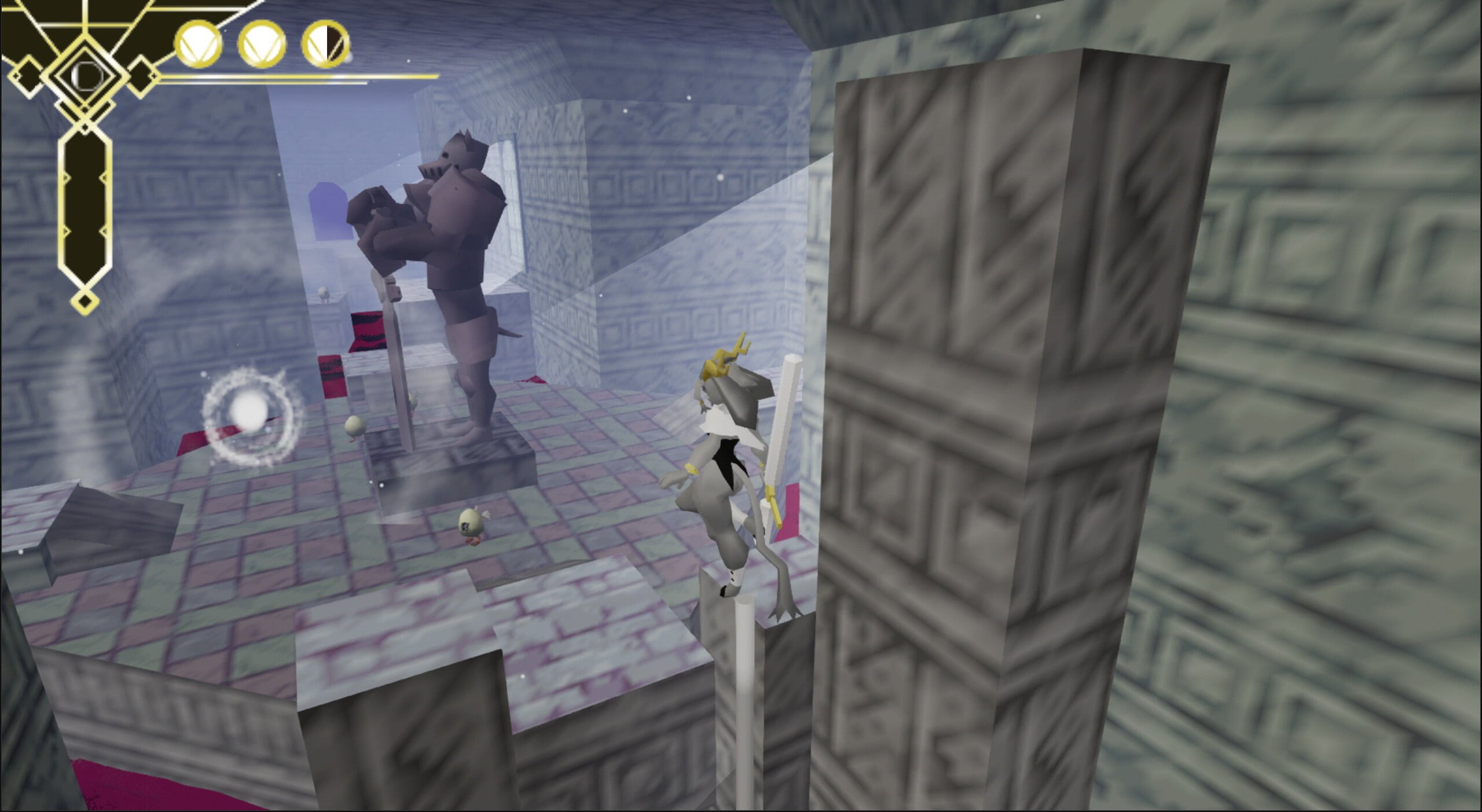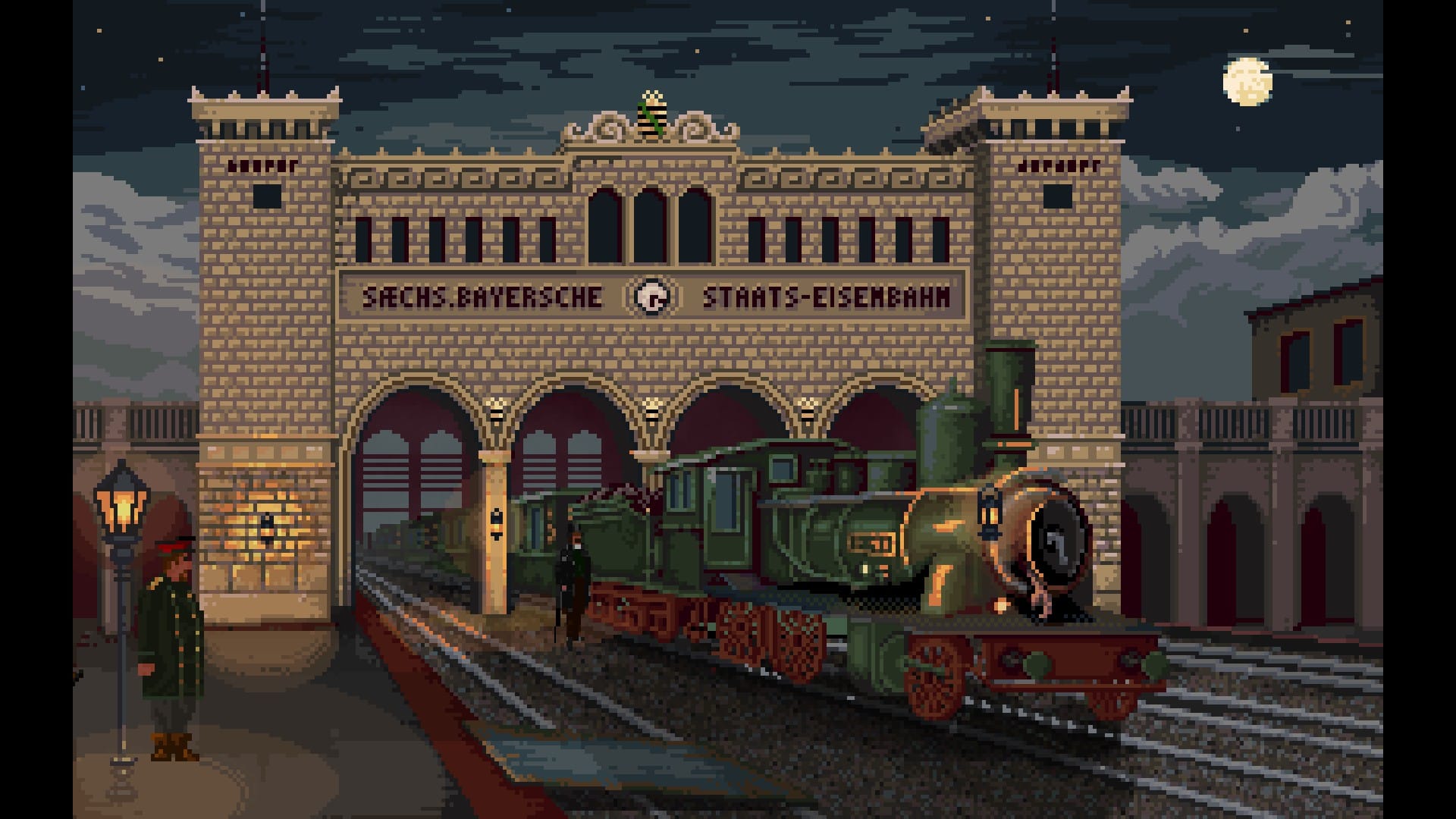The fastest way to make me fall for a game is to give it really good feeling movement. Whether that’s through slick acrobatics and parkour or just making the simple act of running through a space pleasant, it’s one of those elements that can come to define a game. Pseudoregalia is one such example. A small metroidvania with a stylish low-poly aesthetic, Pseudoregalia is a game that constantly feels great to move around in and is specifically designed to make the absolute most of it.
You play as Sybil, a goat-rabbit-cat-like being who traverses the realm of dreams helping those in need. The game begins with her arrival in the dungeon of a castle via a mirror. She begins without any equipment nor abilities, but it doesn’t take long to fix that. Almost all her skills revolve around traversal. Wall jumps, sliding to slip through cracks or to launch a long jump, slamming her weapon into the ground and using it to gain extra height, wall running: all the usual staples you’d want from some parkour action. But it’s in chaining all these together and how accommodating the level design is to experimenting with these abilities that make Pseudoregalia standout.
Traditionally metroidvanias are built around ability locks. If you don’t have the high-jump, you can’t access certain areas. Pseudoregalia is mostly no different, but it’s more lenient due to the flexible nature of Sybil’s abilities. When I had both the wall kick and high jump abilities, I was able to find ways to get around most of the castle. If I could find a corner, I could usually high jump and then bounce back and forth between the walls to scale almost anything. It took work, but it was doable. As I got more abilities, it led to plenty of moments where I wasn’t sure if I did something the “intended” way or if I found my own solution as I started experimenting to see just how far I could push them (and missed plenty of obvious easier ways to get somewhere in the process). It feels expressive in a way it only could by allowing that sort of freedom instead of locking you to doing things one way and one way only.
And this all is enabled by how good it feels. Sybil moves with a snappiness and grace that makes even the most simple actions like a basic jump satisfying. The way you can effortlessly chain moves together in one fluid motion, looking absolutely sick all the while, is a huge part of what makes it work. Once you have all of Sybil’s abilities, the ways you can traipse about the world open up in ways that make backtracking enjoyable because you get to play with those new skills and see how it makes simply getting around a joy all its own.

Pseudoregalia‘s low-poly aesthetic draws on Nintendo 64 games as evident by the way textures blur and how objects fade in from a distance, but it’s also thematically resonant. Low-poly visuals are particularly well-suited to invoking dream logic, to creating that otherworldly or abstract sense dreams so often carry. It’s in part why the aesthetic is so popular and effective among many indie horror games. Pseudoregalia isn’t looking to scare or unnerve, of course, but the visual style still works well for giving the space a dreamlike quality. The way some enemies look animated on twos or threes, the way detail fades into view turning textureless forms into something more concrete as you approach, and the very lay of the land itself all contribute to that sense of strangeness that only dreams can provide.
The labyrinthine level design makes the castle difficult to map mentally because of the ways every room connects to one another. I’m sure it all makes sense when you can see it all laid out, but I was regularly surprised to see where I would end up throughout my time playing as I learned and then rediscovered shortcuts and new pathways. The lack of a map certainly plays no small part in that (though the developer has said one will be added), but it’s also a big part of why I enjoyed Pseudoregalia so much.
I regularly cite Hollow Knight as a game I love because it’s willing to let you become lost and Pseudoregalia is similar. The lack of any obvious signposting or clear objective makes wandering around exciting. Even as I felt like I had a good grasp on the lay of the castle, I would still approach most thresholds wondering if I was on the right path. It’s a feeling I don’t often get in these sorts of games still, so it’s always a welcome surprise to see.
That Pseudoregalia is short is great. I usually expect these sorts of games runtime to average in the double-digit just due to the inherent complexity involved with creating a sprawling interconnected space. Its short length means it’s very focused, always able to put its best foot forward instead of ever dragging even slightly. Much as I wish there were more — to have more spaces to roam about, more challenges to tackle — to be left wanting is ideal when the experience is as good as Pseudoregalia‘s.





